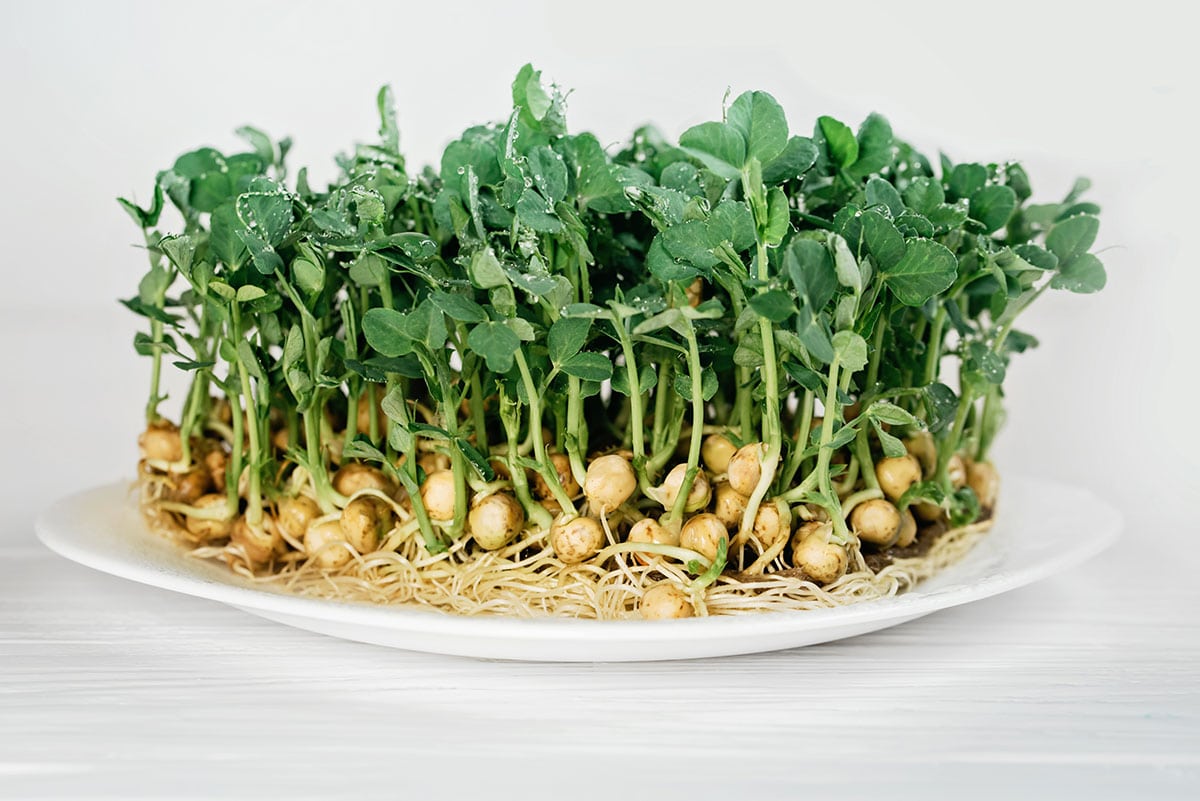1While waiting to sow in the garden and harvest your own fresh vegetables, it is possible to produce your own healthy food indoors, even in the middle of winter. Germinating and growing sprouts or microgreens is quite simple and does not require much equipment. These early stages of plant development are packed with vitamins and nutrients and are even called superfoods. Want to eat healthy without having to run to the grocery store? It’s right here:
Sprouts
Germination is the first step of the plant. It is the first step from the seed to the plant. It takes between two and seven days to germinate seeds to be able to eat them. Crunchy, sprouts can be added to salads, as a substitute for lettuce in sandwiches and burgers, or as a finishing touch to add an energizing boost of greens to your dishes. It’s a pretty simple crop.
You’ll need:
- A commercial sprouter, which you can find at a garden centre, or a glass jar with a perforated lid or cheesecloth
- Seeds of your choice
- Water
Choosing your seeds
The vast majority of seeds can be eaten while germinating, except for tomatoes and rhubarb which are toxic. Vegetables, beans, grains and oilseeds: try them out and choose your favorites. It is first and foremost a matter of taste.
How to do it
Step 1: Soak your seeds in cool water for a while.
Soaking time varies from species to species: ask around.
Step 2: Remove the excess water.
If you are using a glass jar, place it upside down at a slight angle in a saucer so that the water drains easily. Germinators are designed for this, so there is no need to tilt them. Place your germinator out of the sun, but in a well-lit, temperate area.
Step 3: Rinse your seeds.
You should rinse your seeds twice a day, avoiding soaking them in water for too long. Repeat every day until your seeds have germinated.
Step 4: Eat or store your sprouts.
Rinse your seeds one last time before eating them or putting them in the fridge in an airtight container to prevent them from rotting. Their shelf life is not very long: eat them within 3 days, preferably raw, that’s how they are the most nutritious.
Microgreens
Microgreens can be obtained in a few more days and should be planted in potting soil. They have a stronger taste than sprouts and are also crunchier. In addition, their fiber content is high, as are the vitamins they contain. It takes between one and three weeks for the seeds to become young shoots ready to add to your meals.
You will need:
- Specialized potting soil for sprouts, shoots or seedlings
- A tray with a plastic dome
- Seeds
- A small spray bottle for water
How to do it:
Step 1: Soak the seeds as needed.
Some seeds need to be soaked, your garden centre advisor can inform you.
Step 2: Sow the seeds
Fill your tray with about 5 cm of moist soil. You want it moist, but not soggy. If the water runs off when you squeeze it between your fingers, it’s too much. Sprinkle your seeds on top of the potting soil without overlapping. Press them in lightly or add a very thin layer of potting soil on top to cover them.
Step 3: Place your tray in the sun
Seeds need good light, heat and moisture to germinate. Cover your tray with the plastic dome and place it near a sunny window. You can also use supplemental lighting if you don’t have enough natural light.
Step 4: Watering and harvesting
Spray your seeds once or twice a day to keep the soil moist. Do this until your shoots have their first two leaves, the cotyledons, and are then ready to eat. Cut them off at the base of the plant and place them in the fridge. Like sprouts, they have a short shelf life: eat them quickly so you don’t lose them.
Green seedlings
If you’re a salad lover, you can grow your own leaf lettuce in the same way as microgreens. Good light is essential, however, if you want to be successful. Don’t hesitate to get a lamp designed for growing plants, it will certainly come in handy for your seedlings as well. Lettuce takes about 3 weeks to grow. This method is very economical and allows you to consume fresh and local salads, even during the cold season.
Sprouts, microgreens and seedlings are economical and allow you to eat healthy at all times. Moreover, it is a fun activity that is much appreciated by children, who find it easier to eat vegetables in quantity; they are very proud to eat their own produce.
Have fun and bon appétit!







